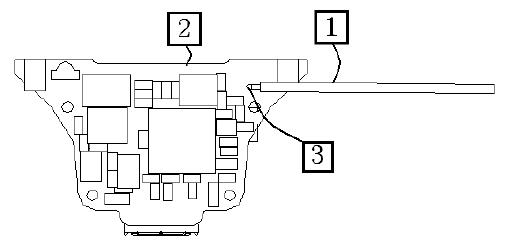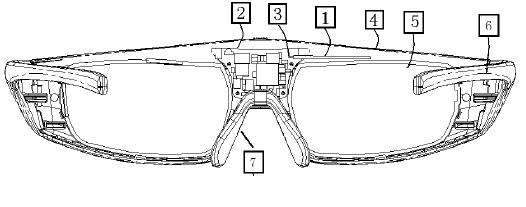Bluetooth 3D (three-dimensional) spectacles
A 3D glasses and bluetooth technology, applied in the directions of instruments, optics, radiating element structure, etc., can solve the problems of poor antenna performance, large antenna return loss, and narrow antenna bandwidth.
- Summary
- Abstract
- Description
- Claims
- Application Information
AI Technical Summary
Problems solved by technology
Method used
Image
Examples
Embodiment Construction
[0018] Hereinafter, preferred embodiments of the present invention will be described in detail with reference to the accompanying drawings. In the specification and the drawings, elements that have the same function and structure are denoted with the same reference numerals, and repeated explanation of these structural elements is omitted.
[0019] figure 1 Shown is a schematic structural diagram of a single-stage antenna. The cross-sectional shape of the monopole antenna 1 can be arbitrary, but the preferred solution is circular. The single-stage antenna with a circular cross-section has better performance than antennas with other shapes, and is convenient for extended installation in the spectacle frame; secondly, the single-stage antenna designed by the invention is applicable to all wireless fields.
[0020] like figure 2 , image 3 As shown, the bluetooth 3D glasses include glasses legs 6, glasses frames 4, two liquid crystal glasses lenses 5, and a PCB board 2, and...
PUM
 Login to View More
Login to View More Abstract
Description
Claims
Application Information
 Login to View More
Login to View More - R&D
- Intellectual Property
- Life Sciences
- Materials
- Tech Scout
- Unparalleled Data Quality
- Higher Quality Content
- 60% Fewer Hallucinations
Browse by: Latest US Patents, China's latest patents, Technical Efficacy Thesaurus, Application Domain, Technology Topic, Popular Technical Reports.
© 2025 PatSnap. All rights reserved.Legal|Privacy policy|Modern Slavery Act Transparency Statement|Sitemap|About US| Contact US: help@patsnap.com



